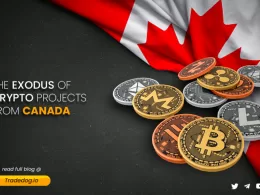The world’s second-largest stablecoin, the USD Coin (USDC), which was launched by Coinbase and Circle, is set to experience a major alteration. The digital currency will no longer be backed by US dollars only.
A consortium that included Coinbase Global Inc. said all of the company’s USDC reserves starting from next month will be shifted into cash and short-term U.S. Treasury bonds, thereby forgoing riskier investments.
The reallocation of the $29 billion stablecoin, marks a swift change from July when a member of the consortium, Circle Internet Financial Inc., said that while most of the USDC is backed by dollars, not all of the reserves are in cash. Some reserves are held in commercial paper and corporate bonds.
Coinbase had previously stated on their website that “each USDC is backed by a US dollar, which is held in a bank account.” The report by Circle has now contradicted this previous claim that USDC is backed dollar-for-dollar in cash.
Matthew Gould, the CEO and founder of Unstoppable Domains said, “This news makes sense.” He continued, “USDC is the market leader for the safest and most compliant USD stablecoin. This move further solidifies that position.”
Coinbase — the US-based cryptocurrency exchange — has now recanted its previous position on the USDC and the current disclosure on its website states that “Each USDC is backed by one dollar or asset with equivalent fair value, which is held in accounts with US regulated financial institutions.”
This news comes after Tether revealed a breakdown of USDT reserves, out of which only 2.6% are kept in cash. The rest of the reserve is a combination of crypto holdings, corporate bonds, secured loans, and other investment vehicles. Among stablecoins, USDC’s market value only trails that of Tether’s $64 billion. Last month, Circle said it was set to go public in a merger with a special-purpose acquisition company, and the deal valued the company at $4.5 billion.
In a series of tweets explaining the situation, Coinbase President Emilie Choi admitted that the company’s description of USDC’s reserves “could have been clearer,” and that it “should have moved faster to update statements like that on our website” after Circle disclosed the reserves included assets that were not cash. Choi added that the money had first moved into a diversified portfolio in May 2021. “Centre, alongside Circle, will ensure that the USDC investments revert to a more conservative investment profile by the end of September.” Choi wrote.
Continuing, Choi wrote that the “USDC has always been fully backed by reserves equal to or greater than the USDC in circulation, giving users the ability to always redeem 1 USD coin for US$1.00.”
According to Circle, USDC’s reserves were only in cash until March 2020, when the company added short-term U.S. Treasuries to fit the coin’s rapid growth. This is according to a Circle spokesperson who said the coin’s disclosures had also changed to reflect that. The spokesperson said in May 2021, the coin’s reserves were moved to a broader portfolio of investments and by the end of September, the reserves will be completely in cash and treasuries with a term of fewer than 90 days.
In July, Centre, a member of the consortium that includes Coinbase and Circle, said that 61% of the reserves were in assets that were risk-free like cash and its equivalents. They also said that some of the reserves were in assets that contained some default risks, such as corporate debt and certificates of deposit with foreign banks. And an additional 12% of the funds were in Treasury bonds. While these aren’t considered default risks, they also aren’t as liquid as cash.
In the past, Tether, which is the largest stablecoin and one of the most widely used assets in trading Bitcoin, has also said each token is backed by one U.S. dollar. This is either through actual money or holdings that include corporate bonds, precious metals, and commercial papers. Concerns have been triggered as a result of this. The fear is that if a large number of traders sell stablecoins at once, there could be a run on assets backstopping the tokens.
This has caught the eye of regulators in Washington, and they are wary of how rapidly stablecoin is growing—market capitalization currently stands above $119 billion—and some of the risks that are hidden.
It was reported in the summer that officials and lawmakers from the Federal Reserve as well as the Biden administration have expressed alarm that some consumers might not be protected in a situation where one of the firms does not have the backing they are purported to have.











